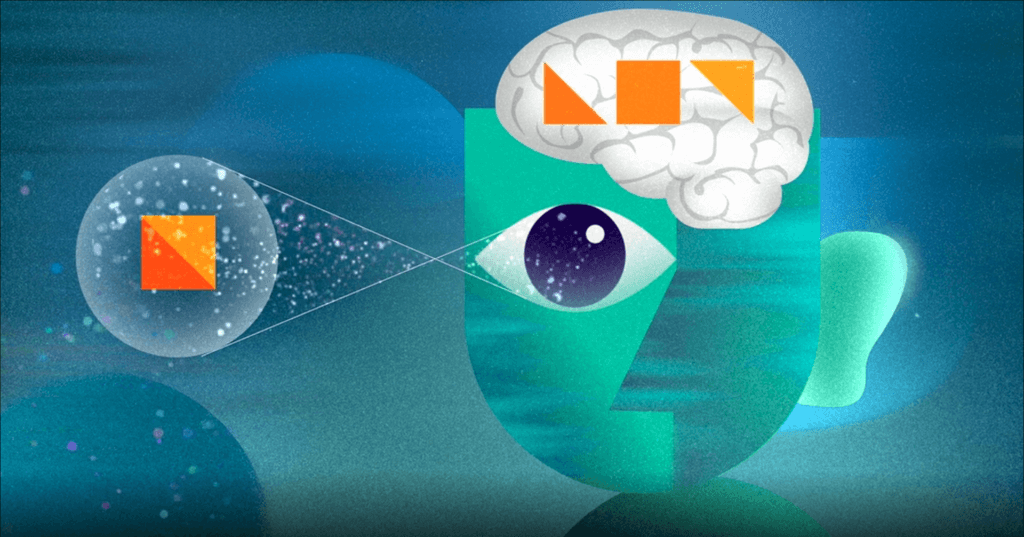
Mapping the Diversity of Our Minds

Do you see the world as it really is? It may seem to you that you do – that the world, with its colours and sounds and people and places, pours itself directly into your mind through your eyes and your ears, through all your senses.
Research into perception – into how the brain makes sense of the information it receives – tells a very different story. Our brains don’t passively perceive the world: they are always actively interpreting sensory information to create our experiences. And because we all have different brains, we will have different experiences – even for the same shared reality. Just as we all differ on the outside, in terms of skin colour, height, and so on, we all differ on the inside too.

Understanding more about this inner ‘perceptual diversity’ is an exciting challenge. The ways we differ on the outside are easy to see, but our inner differences are much harder to measure.
And because it seems as though we see things just as they are, it can be hard even to entertain the possibility that others might experience things differently.
We often only recognise differences in people’s perceptions when the difference is significant. There are many ways this can happen. For example, people with a condition called synaesthesia may experience colours when others do not, and people with autism can live in a more intense perceptual universe. A recent art-science experience called the Dreamachine also shone a light on perceptual diversity. In the Dreamachine, people are exposed to white flickering light with their eyes closed, and they all have individually unique experiences of colours, shapes, movement, and more – a diversity that most visitors find remarkable.

These examples provide a glimpse of the perceptual diversity that applies to all of us, all of the time. To discover more about this uncharted terrain, myself and the team of scientists and philosophers behind Dreamachine developed a new project called The Perception Census. Its aim is to map out, for the first time at this scale, how our experienced worlds are different, and in what ways they remain similar. What’s unique about the Census is that it looks into many different aspects of perception, such as vision, hearing, and time, and how they affect each other. No other scientific study has tried to paint such a comprehensive picture of how diverse and distinctive our ‘inner universes’ really are.
If enough people participate in the Perception Census it will be the largest study of its kind and the first major citizen science project into perceptual diversity. The study includes games, illusions and brain teasers that anyone can do and that explore how your senses work together, how your imagination works, and much more. You’ll also learn about your own powers of perception, and how they relate to others.
There are many mysteries about the senses that you’ll help us discover more about, and that you’ll learn about too. Take our experiences of colour. We all prefer some colours over others – but why is this? And are you having the same experience of blue when you look at a cloudless sky as someone else looking at the same sky? Nobody knows, even though philosophers and scientists have written many books about thorny questions like these. Now, The Perception Census might give us some new answers.

And what about time? Our eyes track light, our ears track sounds, but there is no sensory organ that tracks time. We cannot see time, hear time, taste time or touch time – yet we can all feel time passing. The Perception Census will explore how people differ in their perception of time, and how time perception is influenced by emotions, and by our other senses.
There is much to gain from mapping out the hidden landscape of perceptual diversity.
It could even be that a wider appreciation of perceptual diversity will help build new platforms for empathy, understanding, and communication. If people literally see the world in different ways, perhaps it is not surprising that they may also hold radically different social and political beliefs. As always, understanding how we differ is a necessary first step in bringing us back together.
So please join the thousands of people who have already participated in The Perception Census together we could change the way we understand the human mind, and perhaps even shed some new light on the nature of consciousness itself.
“I started this study this morning and became completely absorbed by it… fascinating, I’ve completed all the tests.” – Perception Census participant
“It is a really fun way to think about things in a different way and also think about things that you take for granted.” – Perception Census participant
The Perception Census was created by a team of world-leading philosophers and scientists (including myself) as part of the acclaimed Dreamachine Programme. It was developed by the University of Sussex and Glasgow in partnership with Collective act and as part of UNBOXED: Creativity in the UK.